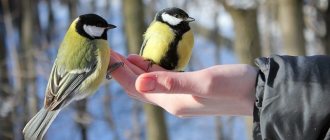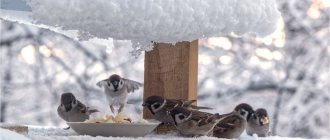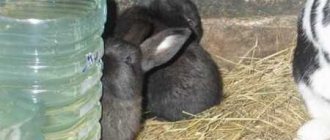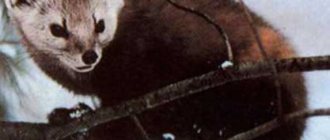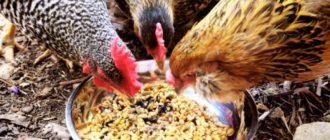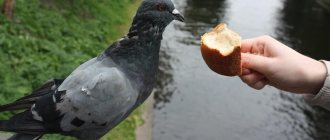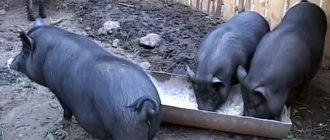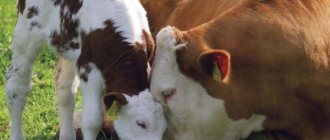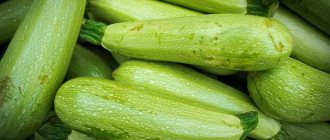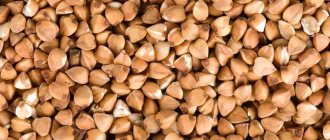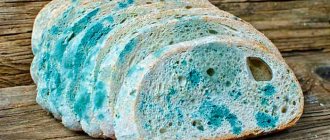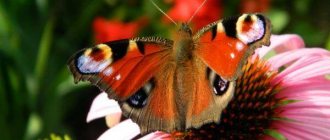Bread and ducks
Is the advice on winter feeding of tits and sparrows fair for all the birds living in our neighborhood? You can often read or hear that city ducks should absolutely not be fed bread or other “human” food. Allegedly, loaves and rolls can cause irreparable harm to the health of waterfowl. However, most materials on this topic contain several fundamental biological errors, which ultimately gave rise to this persistent, but largely unfounded myth.
Photo:
.
Photo: master78/ ru.depositphotos.com.
‹
›
The misconception that wild ducks should never be fed bread is widespread not only in Russia. It seems to be based on a 2008 statement by one of the representatives of the British Royal Society for the Protection of Birds that bread is not the healthiest food for ducks. You need to understand that there are a lot of bird lovers and connoisseurs among the residents of Great Britain. The scale of feeding wild birds there is not comparable to Russia, and the industry is very developed, providing bird lovers with everything necessary for their hobby, including special mixtures for complementary feeding. The published appeal did not say that it is necessary to somehow limit the feeding of wild birds with bread or that bread harms wild birds. As a result, a completely harmless argument, taken up by journalists and ordinary people (including advocates of various “proper nutrition” systems and home-grown environmentalists), that bread for wild ducks is not the only and not the healthiest feeding option, over the course of several years turned into an aggressive “you can’t feed ducks.” bread” with various increasingly ridiculous explanations.
This information wave is supported by messages that appear every now and then that in some new park (usually European) it is forbidden to feed birds with scraps and bread brought with you. But those who retell this news usually do not delve into the fact that the ban on feeding birds in the park is most often dictated not by the fact that complementary feeding is harmful to the birds, but by the fact that there are either too many birds (and they, for example, dirty statues or dirty the fountain ), or, conversely, the available birds are not enough to cope with the endless flow of crumbs, buns and seeds, and instead of feeding, the result is litter, rats, etc. In some cases, excess feeding and excessive accumulation of waterfowl may pose an environmental threat not to the ducks themselves, but for the reservoirs where they live. This usually applies to small, clean park ponds. There, indeed, local authorities may prohibit feeding birds, because due to the accumulation of half-eaten bread and bird droppings in reservoirs, the self-purification process is disrupted, they begin to bloom and become overgrown, turning into a swamp.
Let's look at a few common misconceptions related to feeding urban ducks.
Myth 1. Bread, crackers, chips are certain death for ducks, because they are unable to digest such food. Especially dangerous are fresh white and black bread, which makes birds’ stomachs “swell,” as well as moldy foods.
If ducks really could not digest bread and crackers, and these products constituted and continue to form the basis of their winter food in cities for at least the last hundred years, urban waterfowl populations would have disappeared long ago. But this does not happen; on the contrary, they are growing everywhere. Where the idea of the deadly “swelling of the stomach” came from is also unclear. Something similar sometimes happens in poultry and birds kept in zoos if they are fed only bread or other highly swelling foods, such as peas, in a poultry house. But wild urban ducks have little chance of dying from this.
It is really not recommended to give black bread to passerine birds, especially chicks kept in captivity. But transferring recommendations from feeding passerine chicks to winter feeding of adult wild ducks is the same as transferring recommendations on feeding baby guinea pigs to feeding wild boars.
Wild ducks, no matter what country they live in, have a mixed diet, they are not too picky, so they use everything that they themselves can find and that people bring. A sufficient variety of food is obtained simply due to the fact that they are fed by different people and everyone brings something different: some cooked cereal, some cookie crumbs, some bread. Whether the bread was fresh or stale, grain or wheat, yeast or not is not important, the main thing is that it is crumbled and soaked. Even a few chip crumbs or fragments of chocolate glaze on pieces of bun will not harm them (although a duck will not last long on chips or chocolate alone - however, not only duck). Any bread is processed grain, and it is rotten, soaked grain that is the basis of the autumn nutrition of wild ducks in nature, but they especially need such high-calorie plant food before departure and in cold weather.
As for moldy bread, then everything is ambiguous. Mold can indeed be poisonous, including for ducks, but, firstly, not all mold is poisonous, and secondly, it all depends on its quantity. Of course, it is better, just in case, not to give the birds bread that is completely covered and eaten away by mold, but if it has just begun to mold, it will not cause much harm to the birds.
Myth 2. Bread contains too much salt for a duck, which can poison the bird.
In the quantities in which salt is present in bread and even chips, it is not dangerous for ducks. To get salt poisoning, the unfortunate duck must eat almost a teaspoon of table salt (4-5 g) in its pure form at a time. Therefore, a duck will receive a dangerous dose of salt only if it alone eats an entire 300-gram pack of chips that have not been previously soaked in water, or a whole loaf of bread (0.5 kg).
Usually, general advice on what is best to feed ducks is quite adequate and is taken from poultry farming practice. Recommendations for feeding domestic ducks are also quite suitable for wild ones: a variety of grains and products of its processing (including bread), vegetables, herbs, supplemented with components of animal origin. Only for wild ducks their strict adherence is not required at all. A varied and sufficient diet for them is regulated by the environment itself, and is not provided by the owner of the poultry farm, who is interested in rapid weight gain, high reproduction rate and absolute survival of duck offspring.
Myth 3. Ducks do not need to be fed at all, especially in summer. Birds accustomed to feeding do not fly away for the winter and risk dying when winter comes.
In our latitudes, most mallards lead a migratory lifestyle and in nature they remain for the winter only in exceptional cases. In populated areas, in non-freezing areas of water bodies, stable wintering urban populations of ducks can form, which is what we observe in megacities. But they grow mainly not due to the fact that ducks from wild populations stop flying away and join the urban ones, but due to the natural reproduction of the “urban” ducks themselves. That is, those ducks that are now wintering on the city pond are not the first generation of local non-migratory ducks that have successfully reproduced on the abundant “city grub”. So, if we want ducks to live in our city and eat mosquito larvae in the summer, we need to feed them in the winter.
Natural food suitable for waterfowl is not readily available in cold weather, and its supply is replenished slowly, even if the river freezes only near the shore.
In summer, ducks do not need additional feeding and can easily get by with natural food, although many of them still, out of habit, stay close to feeding areas. If you don’t forget that they can actively participate in the natural cleansing of the reservoir, you shouldn’t feed them; it’s better to “work”, eat duckweed, larvae, etc.
In conclusion, I would like to say that there is no need to buy any special food for urban ducks. It is enough to collect and feed them, instead of throwing them in the trash, suitable edible leftovers and surpluses: stale bread, cookies that turned out to be tasteless or cereal spoiled by a bug.
But what you really should never do is throw the bag in which they were brought after the crumbs, and generally throw used plastic packaging anywhere. Animals, including ducks, often die after accidentally swallowing or becoming entangled in plastic scraps.
Let's love nature wisely and not invent prohibitions and threats where there is no sign of them.
What is the best way to feed birds?
The consumption of the following products will bring great benefits and health to the bird's body:
- unsalted and raw sunflower and pumpkin seeds;
- crushed peanuts;
- corn grains;
- cereals - pearl barley, barley, wheat;
- hard cheese (pieces);
- boiled egg, mashed;
- berries of sea buckthorn, viburnum, rowan;
- pieces of boiled meat or lard;
- dried fruits;
- chopped fruits - apples, pears.
For greater benefit, you can make a feeder and pour clean, dry sand mixed with crushed egg shells at the bottom. This way, only substances useful for digestion will enter the birds’ bodies.
Our help will be very useful for birds , especially in the cold season. The main thing is not to harm the surrounding nature and its inhabitants!
Prohibited Products
When considering what foods should not be given to pigeons, it should be noted that foods are prohibited for both wild and domestic birds. The following foods should not be included in your diet:
Important. Roasted sunflower seeds are a taboo. You should not give them under any pretext unless you want to cause harm.
If you like to feed your birds food from the table, be sure to make sure that it is not moldy or spoiled, otherwise your good intentions will result in poisoning the birds.
There are some foods that are acceptable to use in the diet of pigeons, but only in small and controlled portions. For example, seeds can be offered only to large individuals in small quantities. Millet can also be given only as a last resort. Taking into account the information provided about prohibited products for these birds, you will be able to exclude those that were previously given and thereby provide the birds with a comfortable and healthy diet.
Source
Reasons for giving up flour
Here are some reasons why you should not feed your ducks flour products:
- High carbohydrate content promotes rapid satiety, which prevents the consumption of other, healthier foods.
- The lack of microelements in the product negatively affects the growth and development of birds.
- Swelling of the product in the stomach leads to intestinal obstruction and constipation, which is dangerous for the life of ducks.
- The main ingredient is thermophilic (artificially created) yeast. Once in the bird's stomach, they begin to ferment, causing the food to stop being digested.
Many may disagree and remember the post-war years, when cattle were fed only bread. To begin with, there was no way out, and the shortage of products forced us to take this step. In addition, flour used to be made with natural leaven, but now with artificial yeast.
Belchanka is a protector of birds: in other countries birds are given more attention
Irina Melnichuk says that she has developed a love for animals since childhood. Irina has a private house with a small yard. Now there are about 20 birds in her yard, which she feeds constantly. Three years ago she had 20-40 greenfinches, and in total she observed 15 species of different birds.
Our interlocutor said that a year ago a dove (wild pigeon) with a wounded wing appeared in her yard. Irina named the turtledove Goga. The wing could not be saved, and now Irina is caring for the bird and feeding it.
Irina Melchnichuk contacted “SP” to encourage the residents of Belgorod to help and feed wild birds. Otherwise, they face death - due to cold weather and especially the lack of food supply.
Irina notes that in many European countries, residents devote a lot of time to wild birds.
— I lived in Germany, where ready-made feeders are sold in supermarkets. You can purchase and hang on trees in some place. The birds gather themselves,” said Irina.
According to her, in Chisinau they have moved further in this sense; there are organizations there that help birds. Irina considers the Association for the Protection of Birds and the Environment, led by Silvia Ursul, to be an example.
Bird feeder in Irina Melnichuk's yard. Tits “dine” in it. Photo: Yuri Gagarin
What birds shouldn't do
Black bread can cause death. This bread contains a lot of salt, which is harmful to the kidneys and liver. Birds often leave some of the food in the crop, where the bread quickly swells and ferments - this is very dangerous for birds.
Rye bread is the most dangerous because more yeast is added to it than wheat bread.
It is also necessary to keep in mind that pigeons and crows do not need winter feeding. They themselves find enough food in garbage dumps and garbage containers. Moreover, it is advisable to even make it difficult for them to access winter feeding areas.
